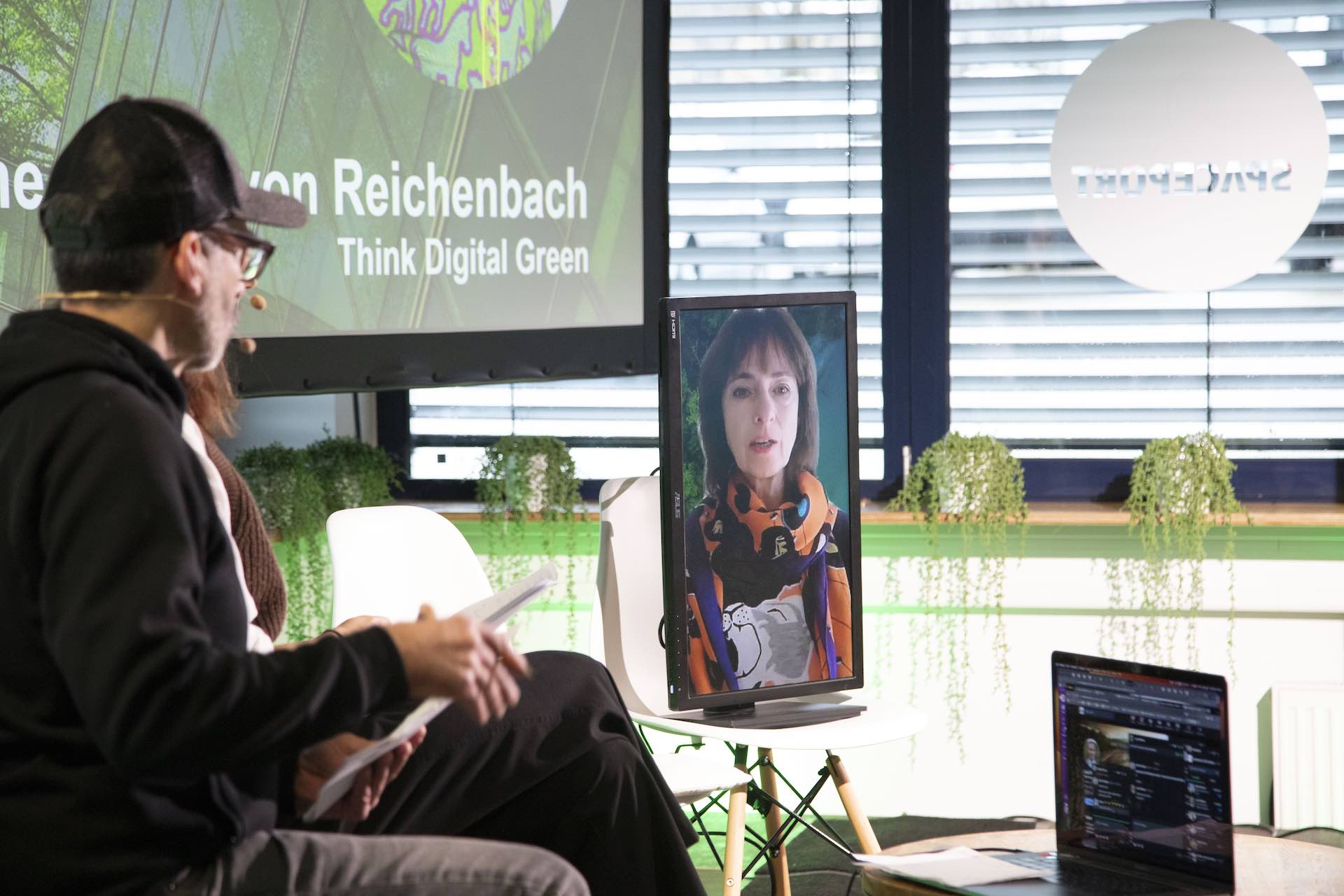Digitalisation brings with it many advantages – but at the same time it is driving up the digital footprint. Think Digital Green shows what can be done about it.
Green design of the digital space without prior knowledge
It all began with a newspaper article in the German newspaper “Frankfurter Allgemeine” in 2018, entitled: The internet also has an exhaust pipe; the content: Some data centres may consume as much energy as a medium-sized German city.
Susanne Grohs was shocked after reading the article and questioned her own digital behaviour. Her concerns grew into a concept and Think Digital Green was born. She is now pursuing the goal of making the digital space greener quickly and free of charge without any prior knowledge.

Think Digital Green explains the CO2 footprint of data communication
“I got a shock. My digital carbon footprint is one tonne per year – I learnt that from the Ökoinstitut,” Grohs explains at the Greentech.LIVE conference. “I told myself that I couldn’t justify this tonne, so I had to find solutions. They can come about if I understand what happens during data communication. That way you can draw conclusions about the energy consumption of data transfer.”
Transporting data requires energy and computing power. In Germany, 1 gigabyte of data transport results in around 280 grams of CO2.
Transporting data requires massive amounts of energy and computing power: 1 GB of data transport results in 280 grams of CO2
The whole thing can then be transferred to individual applications such as emailing, streaming and the purchase of devices in order to draw conclusions about the application’s carbon footprint.
The idea behind this is, of course, to find the best way to reduce the footprint.
“It’s not about me as a consumer feeling bad that I’m limiting myself with digital applications that are important to me. It’s about thinking ahead and saying that both digital and sustainable are possible,” Grohs clarifies.
Save CO2 when streaming through customised quality
Grohs also provides simple tips on how to save on small things.
For example, when streaming, you can pay attention to whether you are in a Wi-Fi or mobile network and at what quality you are streaming. The highest resolution on a mobile phone is not even necessary due to the screen size.
“I can save up to 60 or 70 per cent of CO2 during an hour of streaming,” says Grohs.

Think Digital Green tip: Switch off the camera when it’s not needed
The same applies to video conferencing. Camera on or off makes a big difference.
“When the camera is closed, only around 6 per cent of the CO2 per hour remains, compared to when the camera is open.”
This does not mean that you should always have the camera off, but rather that you should ask yourself when the camera image is actually necessary and when it is not.
Awareness of responsibility for data makes the most sense in the long term
Every digital application is therefore about details that can improve the footprint in the long term. Invisible data traffic is interrupted as a result.
“In our experience, small steps that are regularly taken up as routine are the most effective,” Grohs asserts. “Something like a data rubbish Friday. But please don’t overdo it, otherwise motivation will plummet.”
In general, Grohs and Think Digital Green are positive. They can definitely see that more attention needs to be paid to digital sustainability. Any progress is good, and ultimately we can only achieve it together.
“Individual solutions are good,” smiles Grohs, “the big picture is better.”
